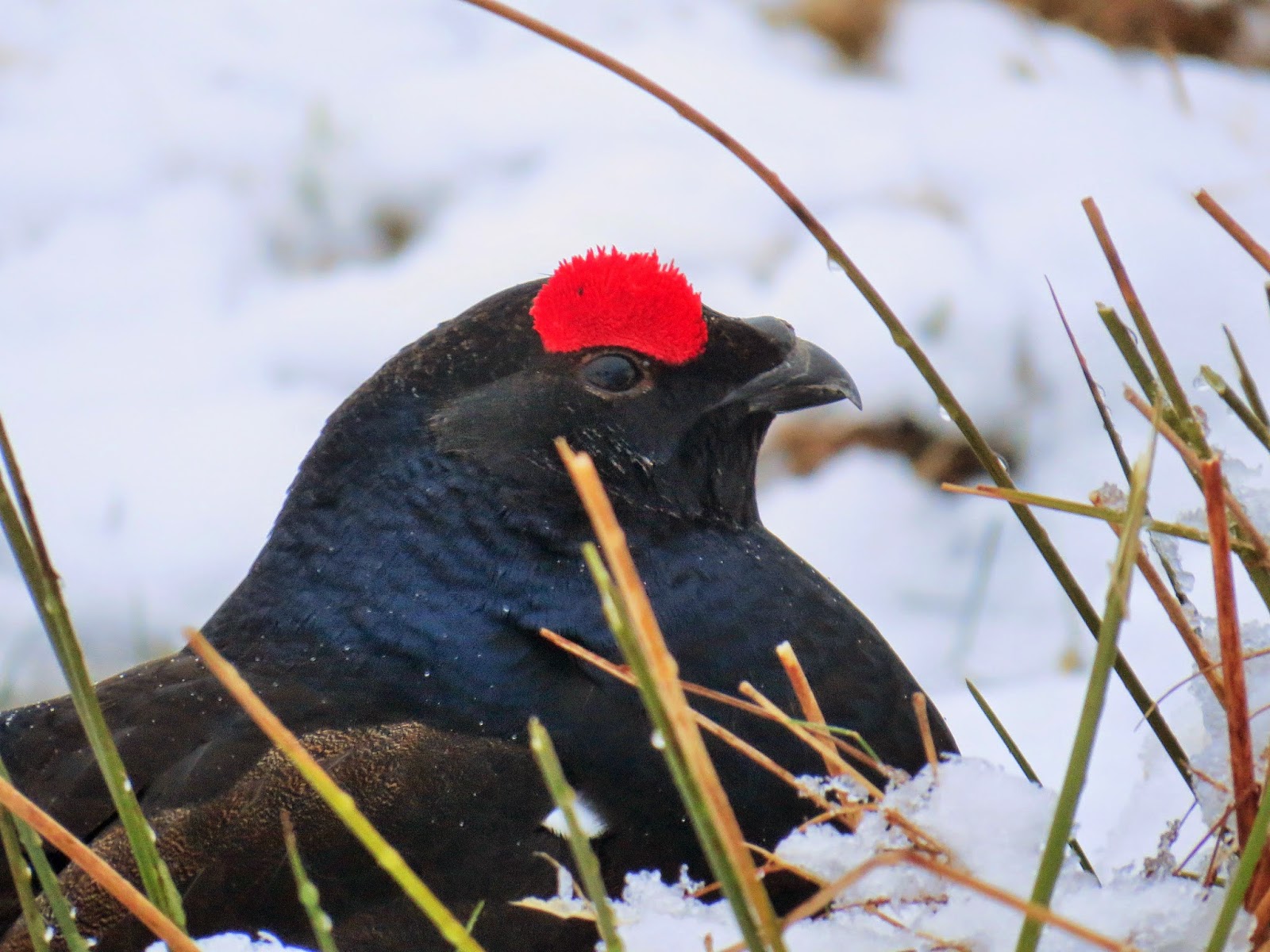I started at the bird observatory, which was extremely quiet in rather windy conditions. A Garden Warbler had been seen in the garden earlier, but besides that all seemed quiet. A brief search for it drew blank, so I decided to head down to the Bill for some sea-watching. I was eventually rewarded with my first five Manx Shearwaters of the year, along with eight Common Scoter and numerous Auks, Gannets and Fulmars. I then walked up to the Top Fields, where there was much more migrant activity. At least 25 Wheatears were present and a decent number of Swallows were passing overhead. I went to the 'Redstart bush'- a bush which has brought me at least one Redstart virtually every time I have checked it at a suitable time of year, and sure enough, there was a stunning male Redstart sitting it!
Redstart, Portland. This species is undoubtedly one of my favourite British birds and a real highlight of Spring at Portland.
The same bush was literally swarming with Willow Warblers and there were many more of these elsewhere around the Top Fields. Sadly no Whinchat nor any other migrant Warblers (besides Chiffchaffs) were seen, but hopefully I will have more chances to see these later this year.
I then went to Suckthumb Quarry, where yesterday's Hoopoe had been seen again and a Pied Flycatcher (still a species missing from my British list) had been reported. Sadly a long search produced no more than a Blackcap, more Willow Warblers and loads of Swallows heading north.
Hearing news of a Garganey at Radipole, I headed there. On the way, I found a small group of Whimbrel at Ferrybridge, the first time I have seen them grounded here. Arriving at Radipole, I rushed up to a bird-watcher whom I assumed was watching the Garganey. I was a bit shocked to find that he was in fact looking at a juvenile Glaucous Gull, only my second-ever (after one in Morocco last year!) and a bird that I had given up on seeing in Britain before I emigrate in July.
Glaucous Gull, Radipole Lake RSPB. Though seeing this winter visitor from the Arctic in mid-April in Dorset was extremely unexpected, it was not quite in the same league as finding one in Morocco last January!
I then found the fantastic drake Garganey showing distantly from the visitor centre with a small flock of Teal and next to several Black-tailed Godwits.
Distant record shot of the drake Garganey at Radipole, my first of the species in Dorset
Sadly, I didn't have time to walk up to the North Hide for what was potentially a third Dorset tick in a day- a Great White Egret. To be honest, I have seen so many of this species that it seems absurd to put in any effort to see it! Annoyingly I also missed a Red-rumped Swallow that appeared at Radipole during the afternoon, but never mind! I can't really complain after a fantastic morning.
Meanwhile, the first House Martins of the year appeared at Hilfield on the 17th April and a Willow Warbler was present today. My year list now stands at 169- already two ahead of my overall total last year!

.JPG)

.JPG)





.JPG)

.JPG)

.JPG)

.JPG)
.jpeg)
.jpeg)

.jpeg)




.jpeg)
.jpeg)


.JPG)

.JPG)














.JPG)


.jpg)








